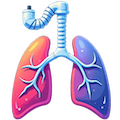LITERATURE
Initial Consideration:
- Level of care (CIWA > 25 and/or high risk features usually needs ICU)
- Have they had delirium tremens in the past?
| hx of DTs/bad withdrawal* | years of heavy use |
| severe medical illness | BAL > 200 at presentation |
| quick symptom onset after last drink | underlying neurocog issues |
| head trauma | older age |
- High dose thiamine?
- Thiamine for treatment of Wernicke’s. Thiamine is cheap and very low risk. The threshold to decide to initiate therapy should be low. Give high dose thiamine (500mg IV Q8h x 3 days, then reassess)
- Confusion, hypothermia with hypotension, decreased consciousness, ataxia, nystagmus
- **stop high dose thiamine if symptoms completely resolve
- which benzo? do you need dexmedetomidine? would phenobarbital be better? gabapentin is an excellent adjunctive therapy
- Benzodiazepines – necessary to prevent seizures, must be used even if using dexmedetomidine
- Make PRN benzodiazepines available and notify nursing to contact you if given
- Assess patient Q4 hours initially and adjust doses as needed
- Hepatically metabolized – if liver dysfunction, utilize short acting benzos (lorazepam) to avoid stacking and unexpected over sedation/respiratory compromise
- Thiamine for treatment of Wernicke’s. Thiamine is cheap and very low risk. The threshold to decide to initiate therapy should be low. Give high dose thiamine (500mg IV Q8h x 3 days, then reassess)
Sample med regimens based on CIWA, physician should be notified of all medication administration
It is VERY important that one not confuse mild withdrawal for a patient faking the need for IV benzodiazepines. Also, using a CIWA protocol often lends towards administration of unneeded medication administration. Consider addition of haloperidol for agitation without sympathomimetic signs and symptoms.
Sample Lorazepam Protocol
Mild Symptoms (Score less than 8)
For CIWA score less than 8 – No treatment, reassess patient in 4 hours
Moderate Symptoms (Score 9-15)
For CIWA score 9-15 – Treat as below, reassess patient in 2 hours
LORazepam (ATIVAN) Oral or IV
LORazepam (ATIVAN) tablet 1 mg, oral, every 4 hours PRN
LORazepam (ATIVAN) injection 1 mg, intravenous, every 4 hours PRN
Give if unable to take oral OR symptoms inadequately controlled on oral medication.
Severe Symptoms (Score GREATER than 15) – Treat as below, reassess pt in 30 minutes.
LORazepam (ATIVAN) injection 2 mg, intravenous, every 2 hours PRN, agitation
Sample Phenobarbital Protocol
- IM is preferred route for phenobarbital administration due to increased risk of respiratory depression when given IV.
- If IV phenobarbital is needed, lower doses and close monitoring is required.
- 60−180 mg x 1 dose loading dose
- 30−90 mg Q8H maintenance dose
- 15−60 mg IV Q8H PRN · IM phenobarbital is not intended to be used to treat seizures.
- IM should not be used in patients with lower extremity burns, therapeutic anticoagulation, or platelet count < 50,000, INR > 2.
- Caution in underlying liver and/or renal disease, monitor for toxicity and be aware of drug interactions (e.g. phenytoin)
- Goal level >15 mcg/mL <40 mcg/mL
HIGH-RISK RESPIRATORY DEPRESSION
LOADING
- 6mg/kg (IBW) IM
- 40% IM dose 1
- 30% 3 hours after dose 1
- 30% 3 hours after dose 2
TAPER
- 64.8mg TID, then
- 32.4mg TID, then
- 32.4mg BID, then
- 32.4mg once
LOW-RISK RESPIRATORY DEPRESSION
LOADING
- 10mg/kg (IBW) IM
- 40% IM dose 1
- 30% 3 hours after dose 1
- 30% 3 hours after dose 2
TAPER
- 97.2mg TID, then
- 64.8mg TID, then
- 32.4mg TID, then
- 32.4mg BID, then
- 32.4mg once
